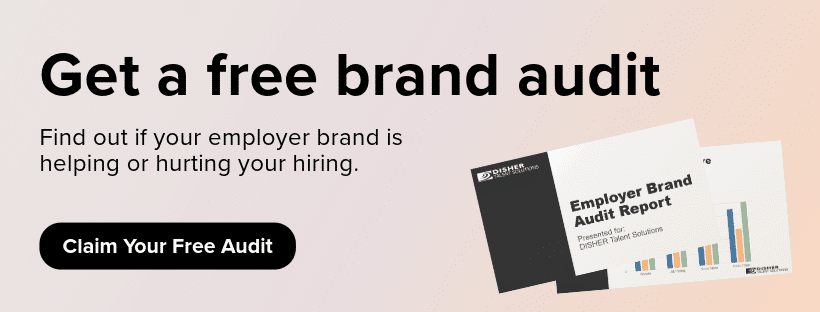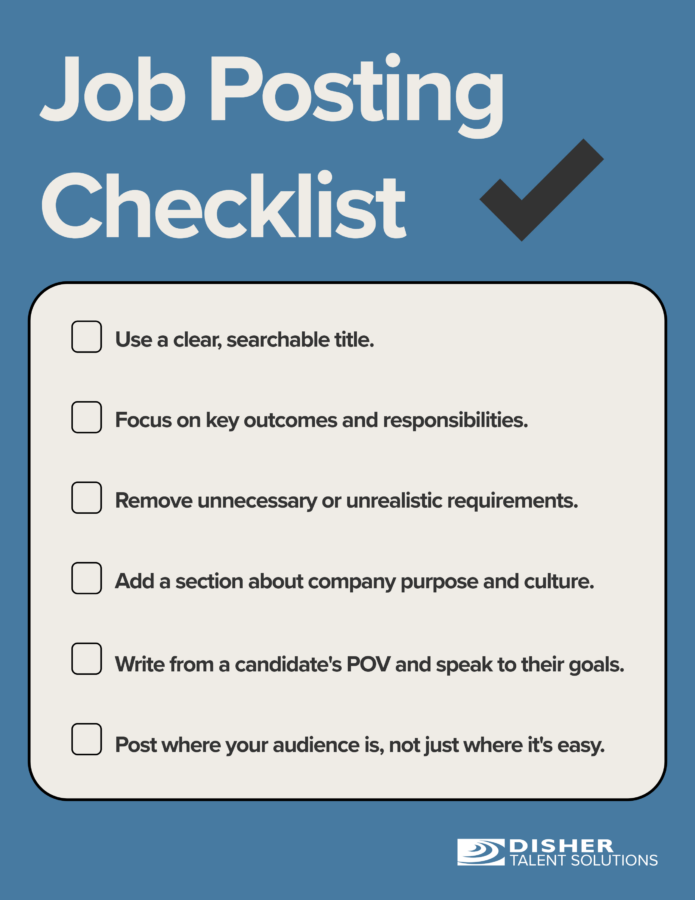
You’re trying to fill an open role, but the applicants trickling in don’t match what you’re looking for. You’ve rewritten the job post a few times, pushed it out to different platforms, and still no bites from the kind of high-performing candidates you hoped for.
It’s frustrating. You’re under pressure to fill the role quickly, but every underwhelming resume chips away at your confidence. You start wondering if the problem is your company, the market, or something else entirely.
We’ve worked alongside companies of all sizes to help them build stronger teams. And over and over again, we’ve seen how the real issue often starts with how the job is posted. In this article, you’ll walk away with five of the biggest reasons great candidates are passing you by, and what you can do to fix them.
1. Vague Job Titles
Think about how you scan a job board. You’re moving quickly, only stopping on titles that clearly match your skillset or spark interest.
Top candidates do the same. If your title says “Rockstar Engineer” or “Sales Ninja,” you’re likely to be skipped over.
Even more traditional titles like “Manager” or “Coordinator” can be too broad if they’re not paired with clarity. “Marketing Manager – B2B Strategy & Content” gives a lot more direction than just “Marketing Manager.” It helps someone quickly understand if they’re the right fit.
Fix it:
Use titles that are common in your industry and describe the level, function, and focus of the role. Avoid internal jargon or clever phrasing that looks cool on a business card but doesn’t mean much to a job seeker. Clarity > creativity.
2. Laundry List Job Descriptions
You’ve seen them—job posts that read like a wish list for the perfect human. Sometimes they’re referred to as “purple unicorns.”
Twenty bullet points, five years of experience in ten different tools, a degree, certifications, and leadership experience… for an entry-level role.
Long, unrealistic job descriptions are one of the fastest ways to lose great people. Candidates see the wall of text and opt out because they don’t check every box, even if they’d do great in the role. Women and underrepresented groups are even less likely to apply if they don’t meet all the listed qualifications.
Fix it:
Focus on the 3-5 most important responsibilities and qualifications. Be clear about what’s must-have vs. nice-to-have. And if your team is open to mentoring or on-the-job learning, say that. Sometimes hiring for potential is more effective than hiring based on credentials.
3. Weak Employer Branding
A job posting is often someone’s first impression of your company. If all it does is describe tasks, you’re missing a huge opportunity to connect with a candidate on a deeper level.
Top talent wants more than a paycheck. They want to feel aligned with your values, mission, and work culture. If your post doesn’t speak to that, someone else’s will.
Fix it:
Add a few sentences about your company’s purpose and how this role contributes to it. Share something human, like how your team supports each other, how you celebrate wins, or what types of people thrive in your company culture.

4. Not Speaking to Candidates’ Motivations
Many job posts are written from the company’s point of view—what we need, what you’ll do, what you must bring…
But the top candidates are asking, What’s in this for me?
They want to know how the job will stretch them, how it fits into their career path, and what kind of flexibility or support they’ll have. If your posting doesn’t address those things, it may come across as just another task list.
Fix it:
Speak directly to the candidate. Mention opportunities for growth, how their work can make a difference, what they’ll learn, and what kind of autonomy they’ll have. Write in a way that makes them the hero of the story and helps them picture themselves doing meaningful work as part of your team.
5. Poor Posting Placement and/or Promotion
Even the best job description won’t do much if no one sees it, or if the wrong people do. Too often, companies rely on just one or two platforms or don’t target their distribution at all.
If you’re hiring for a highly technical or creative role, for example, general job boards may not reach the right niche. And if you’re not promoting the post through your networks or employee referrals, you’re probably missing warm leads.
Fix it:
Post the job where your ideal candidates actually spend time, whether that’s LinkedIn, niche job boards, Slack groups, or professional associations. And make sure your current team knows the role is open and can easily share it with their networks.
Checklist: Overhaul Your Job Postings
Here’s a quick rundown to help you spot and fix these big job posting issues. Even small changes in how you write and share your job can lead to a stronger pool of applicants!

Your Next Hire Might Be One Clear Post Away
You know more than anyone that hiring a new resource is one of the most important decisions a company can make—and it often starts with words on a screen. If your job description isn’t clear, compelling, or candidate-focused (the 3 Cs!), top talent will move on without a second thought.
But when you take the time to write with clarity, empathy, and purpose, you don’t just fill roles. You attract people who are excited to contribute. And if you ever need a second set of eyes before you post, our team is here to help.




